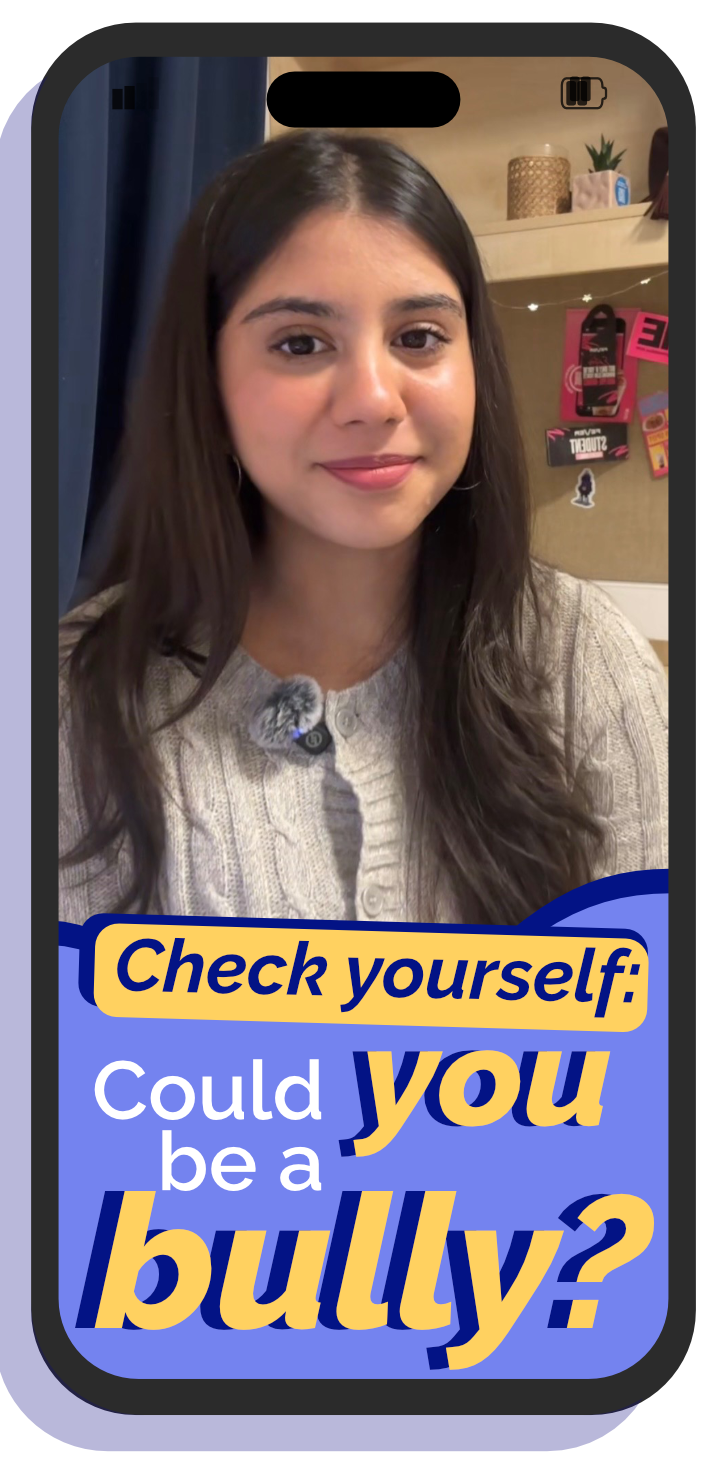Resource Pack: Anti-Bullying Week 2025
This Anti-Bullying Week, we’re empowering young people to use their Power for Good - to speak up safely, raise awareness, and take action when they see bullying happening, both face to face and online.
This resource pack explores what bullying looks like, why it happens, and how we can all play a part in challenging it. From understanding the different roles people play in bullying situations to learning how to be an upstander and support others, these videos encourage reflection, empathy, and confidence in taking positive action.
Use this pack to start conversations in your classroom about kindness, responsibility, and how every student has the power to make a difference.
Preview
Watch a preview of ‘3 Ways to Be Anti-Bullying’ - a short video encouraging students to take small but powerful actions to stand up for others.
In this video, we explore three simple ways to be anti-bullying - from knowing when ‘banter’ crosses the line to showing support and speaking up when it matters. Perfect for sparking discussion on recognising bullying and standing up for others.
Got Peerscroller? Scroll down for more resources.
Key Stage 2
What is bullying, really? This video by Nate helps pupils understand what counts as bullying, why it’s wrong, and what to do if they see it happening. Through examples and positive actions, learners explore how kindness and speaking up can help put an end to bullying for good.
What happens when someone leaves a hurtful comment online? This video helps pupils understand the real impact of ‘hate comments’, why people might post them, and why they’re never okay. It encourages empathy, kindness, and positive digital behaviour - reminding learners that there’s a real person behind every screen.
Sometimes you might want to handle bullying on your own - but when it doesn’t stop, asking for help is okay! This video shows children practical ways to respond to bullying safely, explains why it’s important to involve a trusted adult, and reminds them that no one deserves to be bullied.
Key Stages 3 & 4
Sticking up for someone can make a huge difference - over half of bullying situations stop when a peer intervenes. This video helps secondary school students explore safe, practical ways to challenge bullying, show support, and make their voices heard, proving that even small actions can have a big impact.
Could you be a bully without realising it? This video helps secondary school students reflect on their behaviour, understand how jokes can turn into bullying, and learn practical steps to stop hurting others. It encourages self-awareness, empathy, and rebuilding positive relationships.
Why do some people bully others? This video helps secondary school students explore the reasons behind bullying, from jealousy to insecurity to seeking attention. It encourages learners to recognise harmful behaviour, understand underlying causes, and choose kindness instead.
Key Stage 5
Everyone has a different way of helping when they see something wrong - whether it’s bullying, harassment, or unfair treatment. In this video, we explore four upstander types: the Quiet Thinker, the Bold Speaker, the Behind-the-Scenes Helper, and the Unsure Observer, to show how anyone can make a difference. Which one do your students identify with?
Not all jokes are harmless; sometimes ‘banter’ can cross the line into bullying, even among friends. In this video, Nate explores how to spot when friendly teasing turns hurtful, how to speak up, and how to protect yourself and others in your friendship group.
Kick off classroom discussions with this Debate Your Mates opener! Students are presented with a real-life scenario: should someone forgive a former bully? This video introduces the topic, encourages respectful debate, and sets the stage for students to explore different perspectives around bullying and forgiveness.













